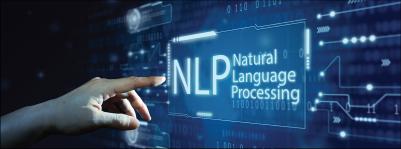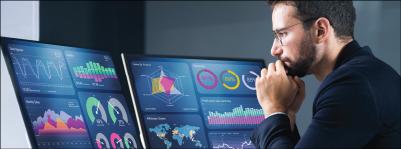Working professionals
Domains
Doctorate
Artificial Intelligence
Data Science
Gen AI & Agentic AI
MBA
Marketing
Management
Education
Project Management
Machine Learning
Doctorate
For All Domains
IIITB & IIM, Udaipur
Chief Technology Officer & AI Leadership ProgrammeSwiss School of Business and Management
Global Doctor of Business Administration from SSBMEdgewood University
Doctorate in Business Administration by Edgewood UniversityGolden Gate University
Doctor of Business Administration From Golden Gate UniversityRushford Business School
Doctor of Business Administration from Rushford Business School, SwitzerlandGolden Gate University
Master + Doctor of Business Administration (MBA+DBA)Leadership / AI
Golden Gate University
DBA in Emerging Technologies with Concentration in Generative AIGolden Gate University
DBA in Digital Leadership from Golden Gate University, San FranciscoArtificial Intelligence
Degree / Exec. PG
IIIT Bangalore
Executive Diploma in Machine Learning and AIOPJ Global University
Master’s Degree in Artificial Intelligence and Data ScienceLiverpool John Moores University
Master of Science in Machine Learning & AIGolden Gate University
DBA in Emerging Technologies with Concentration in Generative AIExecutive Certificate
IIITB & IIM, Udaipur
Chief Technology Officer & AI Leadership ProgrammeIIIT Bangalore
Executive Programme in Generative AI for LeadersupGrad | Microsoft
Gen AI Foundations Certificate Program from MicrosoftupGrad | Microsoft
Gen AI Mastery Certificate for Data AnalysisupGrad | Microsoft
Gen AI Mastery Certificate for Software DevelopmentupGrad | Microsoft
Gen AI Mastery Certificate for Managerial ExcellenceOffline Bootcamps
upGrad
Data Science and AI-MLData Science
Degree / Exec. PG
O.P Jindal Global University
Master’s Degree in Artificial Intelligence and Data ScienceIIIT Bangalore
Executive Diploma in Data Science & AILiverpool John Moores University
Master of Science in Data ScienceExecutive Certificate
upGrad | Microsoft
Gen AI Foundations Certificate Program from MicrosoftupGrad | Microsoft
Gen AI Mastery Certificate for Data AnalysisupGrad | Microsoft
Gen AI Mastery Certificate for Software DevelopmentupGrad | Microsoft
Gen AI Mastery Certificate for Managerial ExcellenceupGrad | Microsoft
Gen AI Mastery Certificate for Content CreationOffline Bootcamps
upGrad
Data Science and AI-MLupGrad
Data AnalyticsGen AI & Agentic AI
Gen AI & Agentic AI
Masters

Paris School of Business
Master of Science in Business Management and TechnologyO.P.Jindal Global University
MBA (with Career Acceleration Program by upGrad)Edgewood University
MBA from Edgewood UniversityO.P.Jindal Global University
MBA from O.P.Jindal Global UniversityGolden Gate University
Master + Doctor of Business Administration (MBA+DBA)Executive Certificate
IMT, Ghaziabad
Advanced General Management ProgramMarketing
Executive Certificate
upGrad | Microsoft
Gen AI Foundations Certificate Program from MicrosoftupGrad | Microsoft
Gen AI Mastery Certificate for Content CreationOffline Bootcamps
upGrad
Digital MarketingManagement
Degree
O.P Jindal Global University
MSc in International Accounting & Finance (ACCA integrated)
Paris School of Business
Master of Science in Business Management and TechnologyGolden Gate University
Master of Arts in Industrial-Organizational PsychologyExecutive Certificate
Education
Education
Northeastern University
Master of Education (M.Ed.) from Northeastern UniversityEdgewood University
Doctor of Education (Ed.D.)Edgewood University
Master of Education (M.Ed.) from Edgewood UniversityProject Management
Certification
Knowledgehut
Leadership And Communications In ProjectsKnowledgehut
Microsoft Project 2007/2010Knowledgehut
Financial Management For Project ManagersKnowledgehut
Fundamentals of Earned Value Management (EVM)Knowledgehut
Fundamentals of Portfolio ManagementKnowledgehut
Fundamentals of Program Management-35c169da468a4cc481c6a8505a74826d.webp&w=128&q=75)
Knowledgehut
CAPM® CertificationsKnowledgehut
Microsoft® Project 2016Certifications & Trainings
-7f4b4f34e09d42bfa73b58f4a230cffa.webp&w=128&q=75)
Knowledgehut
PMP® Certification-7f4b4f34e09d42bfa73b58f4a230cffa.webp&w=128&q=75)
Knowledgehut
PMI-RMP® Certification-7f4b4f34e09d42bfa73b58f4a230cffa.webp&w=128&q=75)
Knowledgehut
PMP Renewal Learning PathKnowledgehut
Oracle Primavera P6 V18.8Knowledgehut
Microsoft® Project 2013-7f4b4f34e09d42bfa73b58f4a230cffa.webp&w=128&q=75)
Knowledgehut
PfMP® Certification CourseKnowledgehut
Project Planning and MonitoringPrince2 Certifications
Knowledgehut
PRINCE2® FoundationKnowledgehut
PRINCE2® PractitionerKnowledgehut
PRINCE2 Agile Foundation and PractitionerKnowledgehut
PRINCE2 Agile® Foundation CertificationKnowledgehut
PRINCE2 Agile® Practitioner CertificationManagement Certifications
-7f4b4f34e09d42bfa73b58f4a230cffa.webp&w=128&q=75)
Knowledgehut
Project Management Masters Certification ProgramKnowledgehut
Change ManagementKnowledgehut
Project Management TechniquesKnowledgehut
Product Management Certification ProgramKnowledgehut
Project Risk ManagementMachine Learning
Machine Learning
Fresh graduates
Domains
Data Science
Management
Marketing
Data Science
Bootcamp
Offline Bootcamps
upGrad
Data Science and AI-MLupGrad
Data AnalyticsManagement
Marketing
Bootcamp
upGrad Campus
Advanced Certificate in Performance MarketingOffline Bootcamps
upGrad
Digital Marketing- Study abroad
- Offline centres
More
RESOURCES
BlogsCutting-edge insights on education
WebinarsLive sessions with industry experts
TutorialsMaster skills with expert guidance
Learning GuideResources for learning and growth
COMPANY
Careers at upGradYour path to educational impact
Hire from upGradTop talent, ready to excel
upGrad for BusinessSkill. Shape. Scale.
Experience centerImmersive learning hubs
About usOur vision for education
OTHERS
Refer and earnShare knowledge, get rewarded
Hypothesis Testing Courses Online
Hypothesis testing is one of the most pivotal concepts in statistics with many real-life applications. Get Hypothesis Testing Programs from the World’s Top Universities
-80f5aca04e9b49ca9902fe2806c12f6e%20(1)-05c9b5b2614c40b681f04c3275487b40.jpeg&w=3840&q=75)
Hypothesis Testing Course Overview
Hypothesis testing is one of the most pivotal concepts in statistics with many real-life applications. It is used by researchers all over the world to test new theories before implementing them. It helps different companies set a baseline quality of their product and decide on improvements.
There are a lot of different parts of testing a hypothesis, from creating a statistical statement to calculations. Nowadays, most of the work in this field is done using software like python, Minitab, SQL, or R.
Apart from using software, testing problems can also be solved by hand, though the process would be time-consuming and tedious.
Simply put, hypothesis testing is a process of examination of claims made against a process with the help of observed data. The process can be anything and is not related to only statistical problems.
Consider a set of random variables X1,X2, X3, ..., XN.
Let F denote the distribution function of the set of random variables.
Note that F is chosen to keep with the experiment’s model belonging to a family of distributions .
Now, the above problem would fall under the umbrella of hypothesis testing if a suggestion of the form
H0 : F 0
is encountered, where 0 is a specified proper subset of .
A statistical hypothesis is a statement used to examine the validity of claims made about the distributions of a set of random variables. The examination process is performed based on a set of observations on the random variable.
The process of examination of the above claims is known as hypothesis testing.
Definition:
If a hypothesis H0 (taken together with the model) specifies the joint distribution of X1,X2, X3, ..., Xn completely, then it is known as a simple hypothesis.
If H0 does not specify the joint distribution completely, it is said to be a composite hypothesis.
![]()
Parametric Setup
A problem of hypothesis testing falls under a parametric setup if it is assumed that the distribution function F belonging to the set of random variables X1,X2, X3, ..., Xn is known (usually assumed to follow a Normal distribution) except for some parameter or parameters .
Non-parametric Setup
A non-parametric setup is used for testing a hypothesis when the assumption of normality is violated. The different tests, like the t-test and f-test, work efficiently when the random variables follow a normal distribution. But for non-normal distributions, these methods are sub-optimum.
Another term used to define a non-parametric setup is distribution-free because the procedures used for testing under this case do not depend on the distribution of the random variables.
Null Hypothesis
In a testing problem, the statistical hypothesis statement that equates to two or more possible outcomes of the experiment is known as a null hypothesis. It is usually taken to be the observed difference between the testing parameters.
It is denoted by H0.
Example:
Consider a testing problem where it is required to test if the mean of a particular distribution, indicated by F (say), acquires a specific value 0 (say). If denotes the mean of the distribution, the null hypothesis will be -
H0 : =0
![]()
Alternative Hypothesis
An alternative or alternate hypothesis is proposed in a testing problem to counter the null hypothesis. If the data from the experiment contradicts the null hypothesis, the alternate hypothesis is suggested as another option.
It is generally represented by H1 or Ha.
Example:
Consider a testing problem where it is required to test if the mean of a particular distribution, indicated by F (say), acquires a specific value 0 (say). If denotes the mean of the distribution, the null hypothesis will be -
H0 : =0
Now, if the data obtained contradicts H0, then it gets rejected by the experimenter, and the alternate hypothesis gets accepted, denoted by -
H1 : 0
The testing problem is usually written as
To test - H0 : =0against H1 : 0
The alternate hypothesis can also be of the form -
H1 : <0 or H1 : > 0
Rejection or acceptance of a null hypothesis
A null hypothesis is rejected or accepted based on the data collected by the experimenter.
Consider the following testing problem:
Let X1,X2, X3, ..., Xn be a set of random variables independently and identically distributed following a normal distribution with mean and standard deviation 0, where the value of 0 is known.
To test: H0 : =0 against H1 : 0
Where the value of 0 is known.
Now, one can carry out testing in two ways. Either a particular test can be used, or simply the mean of the distribution can be calculated using the observed values of X.
Suppose, after calculation, the mean value comes out to be X. Two cases may arise.
Case I: 0=X
In this case, the observed data does not contradict the null hypothesis, so the null hypothesis is not rejected in favor of the alternate hypothesis.
Case II: 0X
In this case, the observed data contradicts the null hypothesis, so it gets rejected in favor of the alternate hypothesis.
How do we correctly calculate the p-value to make an informed decision to accept or reject our null and alternate
In general, the P-value associated with a test statistic in a testing problem denotes the probability that a given point lies in within the critical region. Experimenters use these values to decide whether to accept or reject a null hypothesis.
So, P-value or Probability value is a measure of the probability of occurrence of the event under study by the experimenter under the conditions of a null hypothesis.
Example:
Let there be a bulb manufacturer who claims that a particular lot of bulbs have a lifetime of units. Suppose N bulbs are present in the lot.
This will constitute a testing problem of the form:
To test: H0: Average lifetime of the bulbs is units
Against
H1: Average lifetime of the bulbs is not units.
Let a sample of size n be drawn randomly from the N bulb.
Now, if on calculation the average lifetime of the n bulbs attaints a value very close to (exact value can never be attained due to underlying errors), then the value of the calculated test statistic chosen will match the value of the statistic assumed under the conditions of the null hypothesis. In this case, the P-value will be close to 1 (but never equal to 1).
Suppose the average lifetime of the n bulbs differs significantly from, then the calculated value of the test statistic will also differ significantly from the value that the test statistic assumes under the conditions of the null hypothesis. In this case, the P-value will be close to 0 (but never equal to 0).
In a testing problem, the null hypothesis is not rejected in favor of the alternate hypothesis if the calculated value of the test statistic (denoted by Tcalc, say) chosen falls within the region of acceptance, denoted by W.
If the value of Tcalc falls outside W, then the null hypothesis is rejected in favor of the alternate hypothesis.
Type I Error
Such a case may arise wherein Tcalc W, still the null hypothesis gets rejected.
This type of error is known as type I error.
Definition:
The error committed by rejecting a true null hypothesis is known as a type I error.
Type II Error
It may also happen that Tcalc W, but still, the null hypothesis does not get rejected in favor of the alternate hypothesis. This type of error is known as type II error.
Definition:
The error committed by accepting a false null hypothesis is known as a type II error.
Situation Decision | H0 True | H0 False |
H0 Rejected | Type I Error | Correct Decision |
H0 Not Rejected | Correct Decision | Type II Error |
In a testing problem, the choice of the null hypothesis depends highly should be made keeping in mind both types of errors. A test is termed as good if both types of errors are kept under control since, for practical purposes, it is impossible to get rid of any errors.
Now, it is assumed that the commission of the errors is a random event. As such, the experimenters can easily calculate the probabilities associated with them.
Since the problem of hypothesis testing consists of a missing parameter (say ), the probabilities will also depend on it.
Probability Associated With Type I Error
The probability of type I error associated with is given by:
P [Type I Error] =P [(X1,X2, X3, ..., XN) W]= P(W), 0
Where
X1,X2, X3, ..., XN denotes the population under study
W denotes the acceptance region
0 denotes a specified proper subset of the parameter space
Let be any number such that 0<<1. This value indicates the level at which the probability of type I error should be kept for a good test. So we have,
P(W) = , 0 is known as a test's significance level.
Probability Associated With Type II Error
The probability of type Ii error associated with is given by:
P [Type II Error] =P [(X1,X2, X3, ..., XN) A]= P(A), -0
Where
X1,X2, X3, ..., XN denotes the population under study
A denotes the rejection region
-0 denotes a specified proper subset of the parameter space
Relationship Amid the Probabilities of Type I and Type II Error
The region of acceptance, W, and the rejection region A can be thought of as two sets in the cartesian plane. The culmination of these two sets forms the entire range of values for the test.
Both these regions are compliments of each other, i.e., W=AC
Where Ac is the set complimentary to A.
So, the probability of type II error can also be written as:
P(A) = P(WC)= 1-P(W)
For -0
The probability () =P(W) is a function of () is called the power function of the test.
We have:
() = the probability of type I error associated with , 0
() = 1 - the probability of type II error associated with , -0
The power function is used to judge the nature of the whole test.
The null and alternative hypotheses statements corresponding to a testing problem differ from problem to problem.
Usually, the claim made about the parameter is chosen as the alternative hypothesis when dealing with a problem. Consider the following problem:
Problem:
A lightbulb manufacturer packs their bulbs into cartons, each carton containing 100 bulbs. Out of these 100 bulbs, 30 bulbs are picked at random testing. According to the manufacturer, the average lifetime of a bulb is 1,000 hours. Now, a new manufacturing process has been introduced, which is said to increase the average lifetime of the bulbs. Check whether the new approach is effective, assuming that the lifetime of the bulbs follows a normal distribution.
Solution:
In the above problem, it has been provided that the average lifetime of the bulbs using the old method is 1,000 hours.
A claim has been made that the new manufacturing process will increase the lifetime of the bulb, i.e., it will be more than 1,000 hours.
So, we have to test if the new process actually increases the lifetime of the bulbs.
Let denote the lifetime of the bulbs.
As such the testing problem can be written as:
To test: H0 : =1,000 against H1 : >1,000
The level of significance of a test () is the probability of type I error. This is usually provided to the experimenter.
A test statistic is used to decide the rejection criteria for the null hypothesis in a testing problem. Different tests have different test statistics
Test Statistic for the Mean of a Normal Distribution
Let X1,X2, X3, ..., Xn denote a set of random samples that follow a normal distribution independently and identically with mean and variance 2. Here both the mean and variance are unknown parameters.
Let the testing problem be defined as
To test: H0 : =0 against H1 : = 1
Where 10
We define the test statistic as -
T = (X-)SE
Where X is the mean of the population from which the random sample has been sampled
And SE is the standard error
Now, under H0,
T =(X-0)SE ~ tn-1
So the value of the test statistic can be calculated at a particular level of significance from a t-distribution table
The retrieved value of the test statistic can be computed methodically by using the observations.
Test Statistic for the Variance of a Normal Distribution
Let X1,X2, X3, ..., Xn denote a set of random samples that follow a normal distribution independently and identically with mean and variance 2. Here both the mean and variance are unknown parameters.
Let the testing problem be defined as
To test: H0 : 2=02 against H1 :2=12
Where 1202
We define the test statistic as
T=(n-1)s22
Where s2 denotes the sample variance
Under H0,
T ~ n-12
So the value of the test statistic can be calculated at a particular level of significance from a chi-square distribution table.
The observed value of the test statistic is computed methodically by using the observations.
After calculating the value of the test statistic T, denoted by Tobs (say) we need to compare it to the critical value to determine whether H0 gets rejected.
The test statistic’s critical value is obtained from tables provided or by using the software. The critical value is calculated at a particular level of significance ,say.
Suppose the calculated value of the test statistic comes out to be greater than the critical value at significance level. In such a case, the null hypothesis is rejected in favor of the alternate hypothesis.
Correctly reporting the results of an experiment is one of the most crucial tasks of the experimenter. While dealing with the problem of hypothesis testing, a particular syntax is followed by statisticians all around the globe.
After comparing the value of the test statistic to the critical value, either the null hypothesis will get rejected, or it will not get rejected.
![]()
Case 1: Null Hypothesis Rejected
As the calculated value of the test statistic is greater than the critical value, we reject H0 in favor of H1.
Case 2: Null Hypothesis Is Not Rejected
As the calculated value of the test statistic is less than the critical value, we do not reject H0 in favor of H1.
It is also preferable to report all the values obtained in a tabular format.
One sample t-test is generally used to determine if a significant difference exists between the means of an unknown population and a particular value. It is used when the standard deviation of the population is unknown.
![]()
Assumptions:
1.Data must be continuous
2. The data must follow a normal distribution
3. Sampling should be done using simple random sample techniques such that the probability of selection of each sample is equal
The pre-requisites for performing this test are the population mean, sample size, sample mean, sample standard deviation, and sample size.
Let X1,X2, X3, ..., Xn denote a set of random samples that follow a normal distribution independently and identically with mean and variance 2, where the variance is unknown.
Let the testing problem be denoted as:
To test: H0 : =0 against H1 : 0 (two-tailed test)
H0 : =0 against H1 : > 0 (right-tailed test)
H0 : =0 against H1 : < 0 (left-tailed test)
Where is the value of the hypothesized mean
Now, the standard error of the sample is given by:
SE = sn
Where s is the standard deviation of the random sample
The test statistic is defined as
T = (X-)SE =nX-)s
Under H0,
T = (X-0)SE =n(X-0)s ~ tn-1
I.e., the test statistic follows a t-distribution with degrees of freedom n-1
The critical value if given by: Tctitcal= t; n-1 (for a one tailed test)
t2; n-1 (for a two tailed test)
Where is the level of significance
In a testing problem, z-test is used to check the significant difference between two population means when the standard deviation of the population is known.
Assumptions:
1. Data should be continuous
2. The data should follow a normal distribution
3. The sample should be generated from the population using simple random sampling techniques, such that the probabilities of selecting the samples are equal.
4. The population standard deviation should be known.
Let X1,X2, X3, ..., Xn denote a set of random samples that follow a normal distribution independently and identically with mean and variance 2, where the variance is known.
Let the testing problem be denoted as:
To test: H0 : =0 against H1 : 0 (two-tailed test)
H0 : =0 against H1 : > 0 (right-tailed test)
H0 : =0 against H1 : < 0 (left-tailed test)
Where is the value of the hypothesized mean
The test statistic is defined as
Z=X-/n
Where X=i=1nXin
Under H0
Z = (X-0)/n ~ N(0,1)
I.e, the test statistic follows a standard normal distribution
The critical value is given by: Zctitcal= z; n-1 (for a one-tailed test)
z2; n-1 (for a two-tailed test)
Where is the level of significance
The use of t-test can be extended beyond one sample, i.e., it can also be used to check for a significant difference between the means of two different independent populations.
Assumptions:
1. Data must be continuous
2. Random sampling techniques from the population should generate the data.
3. The data should follow a normal distribution
4. The variances of the two independent groups should be equal
Let X1,X2, X3, ..., XnX denote the first random sample and Y1,Y2, Y3, ..., YnY denote the second random sample such that they are independent of each other.
Let the first sample follow a normal distribution with mean X and variance sX2.
Let the second sample follow a normal distribution with mean Y and variance sY2.
To test: H0 : X=Y against H1 : XY (two-tailed test)
H0 : X=Y against H1 : X> Y (right-tailed test)
H0 : X=Y against H1 : X< Y (left-tailed test)
We define the test statistic as
T=X-YSE(1nX+1nY)
Where SE is the pooled standard deviation is given by
SE ={(nx-1)sX2}+{nY-1)sY2}nX+nY-2
Under H0, T ~ tnX+nY-2
The critical value is given by: Tctitcal=t; nX+nY-2 (for a one-tailed test)
t2; nX+nY-2 (for a two-tailed test )
Where is the level of significance
A paired t-test is used to check for the presence of any significant difference between two variables under the same subject. Usually, the two variables are separated by time.
Example:
An experimenter may want to find if there is any significant difference between deaths due to COVID-19 in May 2020 as compared to June 2020.
So, a paired t-test is used to check whether the mean difference between the pairs of observations differs significantly.
Assumptions:
1. The samples under study must be independent, i.e., any measurements made on the first sample should not affect the second sample.
2. Each sample pair must be obtained from the same subject, e,g., the weights of patients before and after undergoing a diet.
3. Each sample pair must follow a normal distribution.
Let X1,X2, X3, ..., Xn denote the first random sample and Y1,Y2, Y3, ..., Yn denote the second random sample such that they are independent of each other. Let both of them be normally distributed.
Let Z be a new random variable denoting the difference between the two samples, i.e.,
Z=X-Y
Let Z denote the mean of the differences and sZ2 denote the variance of the difference.
To test: H0 : Z=0 against H1 : Z0 (two-tailed test)
H0 : Z=0 against H1 : Z>0 (right-tailed test)
H0 : Z=0 against H1 : Z<0 (left-tailed test)
The test statistic is given by
T=ZsZ/n
Under H0, T ~ tn-1
The critical value if given by: Tctitcal= t; n-1 (for a one tailed test)
t2; n-1 (for a two tailed test)
Where is the level of significance
If observations are taken from a population with a given mean, it is not necessary that they will be identical. Due to the presence of random observation error, the observations fluctuate around the mean. This is a natural, inevitable variation. On top of this, another source of variation or sources of variation is deliberately introduced or suspected to enter due to circumstances beyond our control.
Hence, observations are heterogeneous or not homogeneous concerning the source or sources of variation.
Example:
An experimenter wishes to assess the effect of a sleeping drug on the average amount of sleep of patients.
A deliberately introduced source of variation, for example, a sleeping drug, is called “treatment” or “factor”. Thus certain patients who do not receive the “treatment” form one group, and the other groups are formed by changing the “dose” of the drug. Besides the drug, the patients can be classified according to other factors such as age or gender.
The effect of these sources of variation; that is, treatment can be assessed by analyzing the total variation and spilling it into components corresponding to these sources of variation.
Now, this analysis can be done in several ways, Analysis of Variance or ANOVA being one such method. The analysis of variance is a body of statistical methods of analyzing observations assumed to be of the structure
Yi= b1xi1+b2xi2+...+bpxip+ei , i=1(1)n j=1(1)p
, where the coefficients {xij} are the values of “counter variables” or “indicator variables’ which refer to the presence or absence of the effects {bj} in the conditions under which the observations are taken as: xij is the number of times bj occurs in the ith observation and this is usually 0 or 1. In general, in the analysis of variance, all factors are treated qualitatively.
Now the experimenter may also be interested to know if the effect of any of the treatments in an ANOVA setup differs significantly concerning the other treatments.
Let the data be modeled as
Yi=+i+ei , i=1(1)n
Where is the process mean
i denotes the effect due to the ith treatment
ei is the random error associated with the process
To test: H0: 1=2=3= ... = n=0 against H1: not H0
Now there may be two cases that the experimenter may face.
Case I: Null Hypothesis Is Not Rejected
In this case, since H0 is not rejected in favor of H1, no significant difference exists between the effect of the treatments.
Case II: Null Hypothesis Rejected
If the null hypothesis gets rejected in favor of the alternate hypothesis, then the experimenter can claim that the effects due to one or more treatments are different.
Pairwise testing is used on all treatment pairs to determine which treatments are responsible for the difference. This process is known as post hoc analysis.
Many courses are available today that provide quality education on hypothesis testing. These courses are especially beneficial because they will save you a lot of time and energy.
The main advantage of opting for an online course is that you can learn at your own pace. In offline courses, once a topic is covered, it will be up to you to learn it because the professor may move on to the next topic without waiting for you to finish. This does not happen in online courses. Online courses follow your pace of learning and thus offer better learning opportunities.
Another significant advantage of online courses is that you can attend classes from the comfort of your home, significantly reducing travel expenses.
When you opt for online courses, you will be provided with a choice of instructors and can select someone who suits your needs best. This will allow you to learn much more effectively than offline courses, where your choices remain limited.
Online courses also have excellent doubt-clearing facilities that offline courses lack.
So, in light of the given data, an online hypothesis testing course is better than an offline one.
The syllabus for a hypothesis testing course covers.
1. Test of a statistical hypothesis and critical region
2. Type I and type II errors
3. Level of significance and power of test
4. Optimum tests in different situations
5. Unbiased tests
6. Neyman-Pearson lemma
7. Construction of most powerful (MP) and uniformly most powerful (UMP) critical regions
8. MP and UMP regions in random sampling from a normal distribution
9. Construction of type A regions
10. Construction of type A1 regions
11. Optimum regions and sufficient statistics
12. Randomized tests
13. Composite hypotheses and similar regions
14. Similar regions and complete sufficient statistics
15.Construction of most powerful similar regions
16. Test to derive the mean of a normal distribution
17. Test for the variance of a normal distribution
18. Monotonicity of power function
19. Consistency
20. Invariance
21. Likelihood-ratio tests
22. Comparing the means of k normal distributions with common variance
23. Properties of likelihood-ratio tests
The complex process of Hypothesis testing is being broadly leveraged industry-wide to make well-informed, data-driven decisions towards assured results. The power of Hypothesis testing enables professionals to test their theories before putting them into action, which can significantly benefit organisations to reap value while cutting risks of potential repercussions.
Its active implementation in business, as well as investment opportunities, is helping experts perform statistical analysis against containing datasets and receive decisive predictions towards a winning strategy. As Hypothetical testing is strengthening its statistical methods to enhance accuracy, more and more businesses are incorporating it to test their theories before committing resources to it, leading to a thriving future projection in the coming days.
Today, all major jobs are in the data science field. A data science course may just land you your dream job.
Hypothesis testing is one of the most pivotal concepts in statistics. This concept is used in all industries. As a result, there has been a huge demand for hypothesis testing courses in India.
These courses offer all the knowledge that any data scientist may possess, allowing you to apply for your dream job no matter your educational background.
Hypothesis testing is a part of statistics. So, solving these problems generally falls on the data scientists or data analysts who deal with statistics as a whole.
The median salary of data scientists in India is Rs. 46,953 per annum.
The entry-level salary for an analyst with an experience of less than a year is Rs. 3,67,000. For an experienced data analyst with more than 20 years of experience, the salary is Rs. 2 million.
Different factors affect the job of a data analyst. A base-level data analyst should know basic statistics and software like python, SQL, and R. Apart from these, they must also possess project management and organizational skills.
Data analysts should also have an analytical mind that allows them to work seamlessly with large unstructured data sets.
Other factors that determine their salary are the company they work at, its size and reputation, their position, work experience, and geographic location.
The median salary of a data analyst in the US is $ 63,259 (Rs. 49,43,545.35) per annum.
The median salary of a data analyst in the UK is £ 28,218 (Rs. 2706930.73) per annum
Data Science Course Instructors
Learn From The Best
Learn Data Science fundamentals from expert instructors who help you excel in your careers by imparting cutting-edge analytics and machine learning skills.
8
Instructors
10
Industry Experts

Prof. Paulo Lisboa

Head of Dept - Applied Mathematics
Studied mathematical physics at LU and was the chairman of Industrial Mathematics at KMJU in 1996 and Head of Graduate School in 2002

Prof. Dhiya Al-Jumeily

Professor - Artificial Intelligence
A senior member of the IEEE and a chartered IT Professional, he is a fellow of the UK Higher Education ACademy

Debabrata Das

Director, IIITB
Dr. Debabrata Das is Director of IIITB. He has received his PhD from IIT-KGP. His main areas of research are IoT and Wireless Access Network

Tricha Anjali

Ex-Associate Dean
Prof. Anjali has a PhD from Georgia Institute of Technology as well as an integrated MTech (EE) from IIT Bombay.

Dr. Gabriela Czanner

Faculty - Engineering and Technology
A Senior lecturer at Department of Applied Mathematics at LJMU. Her research focus is advanced statistics for decision support

Chandrashekar Ramanathan

Dean Academics
Prof. Chandrashekar has a PhD from Mississippi State University and experience of over 10 years in several multinational organisations.

Prof. G. Srinivasaraghavan

Professor
Prof. Srinivasaraghavan has a PhD in Computer Science from IIT-K and 18 years of experience with Infosys and several other MNCs.

Dr. Atif Waraich

Faculty - Computer Science
A Senior faculty of Engineering and Technology at LJMU who has multiple publications in the health care domain

Bijoy Kumar Khandelwal

COO, Actify
Bijoy comes with a deep understanding of the private and cloud architectures and has helped numerous companies make the transition

S. Anand
-39a9e7a7278a441ea08a60a1f45b4913.png&w=128&q=75)
CEO
An alumnus of IIT Madras, IIM Bangalore and LBS London, Anand is among the top 10 data scientists in India with 20 years of experience

Rajesh Sabapathy

Sr Director, Data Science
Rajesh has 10+ years of experience leading Data Science teams in various domains solving complex problems using Deep Learning & ML technique

Kautuk Pandey

Lead Data Engineer
Kautuk has 10+ years of experience working in Data Science. He is a seasoned professional in Big Data, AWS, Pyspark and other technologies

Sajan Kedia

Ex- Data Science Lead
Sajan graduated from IIT, BHU and has tons of experience in Data Science, Big Data, Spark, Machine Learning and Natural Language Processing

Ankit Jain

ML Engineering Manager
An alumnus of IIT Bombay, UCB, and HBS with over 9 years of experience. Ankit has been recognised as 40Under40 Data Scientist for 2022

Anshuman Gupta

Director, Data Science
He has a Ph.D (Dual) from Penn State University as well as a B.Tech. Degree from IIT Bombay

Behzad Ahmadi

Data Scientist
An M. Tech graduate and PhD from Jersey Institute of Technology, Behzad possesses tremendous years of experience in Data Science and ML

Ujjyaini Mitra

Head of Analytics
An alumnus of McKinsey and Co, Flipkart and Bharati Airtel with over 11 years of experience

Mirza Rahim Baig

Lead Analyst
Advanced analytics professional with 8+ years of experience as a consultant in the e-commerce and healthcare domains.
Data Science Projects
Learn by Doing
Our data science online certification programs have projects to apply theoretical knowledge in practical scenarios, helps you to tackle real-world problems.
16+
Industry projects to choose from
In this assignment, you will work for a consumer finance company which specialises in lending various types of loans to urban customers and use EDA to analyse the patterns present in the data. This will ensure that the applicants are capable of repaying the loan are not rejected.
Data Visualisation
Data Analysis
Data Interpretation
Credit EDA Assignment
In this assignment, you will work for a consumer finance company which specialises in lending various types of loans to urban customers and use EDA to… Know More
Skills learned
Data Cleaning
Data Visualisation
Data Analysis
Data Interpretation
MySQL Queries
Data Manipulation
Data Analysis
RSVP Case Study
In this assignment, you will work on a movies dataset using SQL to extract exciting insights about popular films and the factors that drive a film.
Skills learned
MySQL
MySQL Queries
Data Manipulation
Data Analysis
ML Modelling
Model Evaluation
Bike Sharing Assignment
Build a regression model to understand the factors on which the demand for bike sharing systems vary on and help a company optimise its revenue.
Skills learned
Linear Regression
ML Modelling
Model Evaluation
In this case study, the company requires you to build a machine learning classification model wherein using some demographics and behavioral data of the leads (potential buyers), it will be able to identify the ones most likely to convert.
Decision Trees
Classification
ML Modelling
Model Evaluation
Business Problem Solving
Lead Scoring Case Study
In this case study, the company requires you to build a machine learning classification model wherein using some demographics and behavioral data of t… Know More
Skills learned
Logistic Regression
Decision Trees
Classification
ML Modelling
Model Evaluation
Business Problem Solving
Telecom companies often face the problem of churning customers due to the competitive nature of the industry. Help a telecom company identify customers that are likely to churn and make data-driven strategies to retain them from the perspective of a business analyst.
Tree Models
Model Selection
Feature Engineering
Classification
ML Modelling
Model Evaluation
Business Problem Solving
Model Selection Case Study - Telecom Churn
Telecom companies often face the problem of churning customers due to the competitive nature of the industry. Help a telecom company identify customer… Know More
Skills learned
Logistic Regression
Tree Models
Model Selection
Feature Engineering
Classification
ML Modelling
Model Evaluation
Business Problem Solving
Telecom companies often face the problem of churning customers due to the competitive nature of the industry. Help a telecom company identify customers that are likely to churn and make data-driven strategies to retain them from the perspective of a data scientist.
Tree Models
Boosting
Model Selection
Regularization
Feature Engineering
Classification
ML Modelling
Model Evaluation
Business Problem Solving
Advanced ML Case Study - Telecom Churn
Telecom companies often face the problem of churning customers due to the competitive nature of the industry. Help a telecom company identify customer… Know More
Skills learned
Logistic Regression
Tree Models
Boosting
Model Selection
Regularization
Feature Engineering
Classification
ML Modelling
Model Evaluation
Business Problem Solving
Lexical Processing
Regex
POS Tagging
Dependency Parsing
Syntactic Processing Assignment
Use the techniques such as POS tagging and Dependency parsing to extract information from unstructured text data.
Skills learned
Natural Language Processing
Lexical Processing
Regex
POS Tagging
Dependency Parsing
Sqoop
Redshift
Spark
ETL Pipeline
ETL Project
Make use of Sqoop, Redshift & Spark to design an ETL data pipeline.
Skills learned
AWS
Sqoop
Redshift
Spark
ETL Pipeline
Analyse movie data from the past 100 years and find out various insights to determine what makes a movie do well. Use data manipulation, slicing, and various other dataframe operations to successfully find usable insights from the movies.
Data Processing
Data Visualisation
Data Analysis
Dashboarding
Data Storytelling
IPL Visualization Assignment
Analyse movie data from the past 100 years and find out various insights to determine what makes a movie do well. Use data manipulation, slicing, and … Know More
Skills learned
Tableau/Power BI
Data Processing
Data Visualisation
Data Analysis
Dashboarding
Data Storytelling
Linear Regression
ML Model Evaluation
Advanced Regression
Build a regularized regression model to understand the most important variables to predict
Skills learned
ML Modeling
Linear Regression
ML Model Evaluation
Hadoop
MapReduce Programming
mrjob
Linux
Sqoop
Apache HBase
SQL
MapReduce Programming Assignment
Perform MapReduce Programming in a big data environment on a large dataset.
Skills learned
AWS
Hadoop
MapReduce Programming
mrjob
Linux
Sqoop
Apache HBase
SQL
Big Data with Spark
PySpark
Big Data Case Study
Understand how a big data project in the industry is taken up and solved through a comprehensive big data case study on cloud.
Skills learned
AWS
Big Data with Spark
PySpark
Python
Data Analysis
SQL & Python Lab
Solve intensive programming questions in a competitive lab environment to showcase and evaluate your SQL and Python coding skills.
Skills learned
SQL
Python
Data Analysis
Understand the factors that drive the Airbnb business and help the team leads tackle problems and bottlenecks through extensive data analysis on UI tools.
Data Storytelling techniques
Data Visualisation
Tableau
Airbnb Case Study
Understand the factors that drive the Airbnb business and help the team leads tackle problems and bottlenecks through extensive data analysis on UI to… Know More
Skills learned
Data Analysis
Data Storytelling techniques
Data Visualisation
Tableau
Spark
Spark Streaming
Apache Kafka
Retail Project
Build an end-to-end real-time data processing application using Spark Streaming and Kafka.
Skills learned
AWS
Spark
Spark Streaming
Apache Kafka
Domain understanding
Data Analysis
Business Case Study
Understand how data projects are taken up in the industry and implement the steps required to successfully manage and complete a data project.
Skills learned
Business Problem Solving
Domain understanding
Data Analysis
In this assignment, you will build a complete neural network using Numpy. You will implement all the steps required to build a network - feedforward, loss computation, backpropagation, weight updates etc. You will use the MNIST dataset to train your model to classify handwritten digits between 0-9.
Neural Networks
PyTorch
NN Assignment
In this assignment, you will build a complete neural network using Numpy. You will implement all the steps required to build a network - feedforward, … Know More
Skills learned
Deep Learning
Neural Networks
PyTorch
Placements in Data Science Courses
Our Placement Numbers
Excel in data-driven careers with our certification in Data Science, boasting a high rate of successful student placements. Get hired by top companies.
Top Recruiters












Success Stories
What Our Learners Have To Say
upGrad's student mentor played a very importany role in my learning journey
upGrad's student mentors played a crucial part in my learning journey. I followed them and they helped a lot in clarifying my queries related to my online data science course. They also gave me placement assistance as a part of my data science course, where they perfectly guide you on how to start a career as a Data Analyst.

Abhinay Bandaru
Product Analyst, Head Infotech
3 Years of Experience
The upGrad's placement drive helped me to secure a job in MNC
My online data science course's content was so well-structured that it helped me grasp concepts that were entirely new to me. Thanks to upGrad's placement drive, I was able to secure a job at Kantar Analytics.

Bhagvathi
Data Analyst, Kantar
1 Year of Experience
Additional benifits of upGrad helped a lot in terms of gaining practical exposure
upGrad's online data science courses are truly amazing. The mentorship through industry veterans, BaseCamps, and student mentors makes the programme extremely engaging. I Would definitely endorse the data science programme for its rich content and comprehensive approach to Data Science.

Moulik Srivastava
Technology Project Manager & Commercial Strategy Associate, Victory Farms
5 Years of Experience
Being online, it was like a university experience
Learning with upGrad for my data science course was like going back to University for me. Their data science certification, career support and mentorship calls really helped me switch to a career in the field of Data Science.

Atul Agarwal
Data Scientist, Scaler
7 Years of Experience
Structured and easy curriculumn
The curriculum of the data science online course is very structured and easy to consume. The mock calls and encouraging words from the CEO before my interview were extremely encouraging. One of the best online data science course there is in the market

Aishwarya Ramachandran
News Analyst, Thomson Reuters
6 Years of Experience
Data Science Free Courses
Start Learning For Free
Begin your Data Science journey with our free introduction to data analytics courses, a perfect starting point for analytical upskilling.

Free Certificate
Artificial Intelligence in the Real World
This free AI course delves into AI's diverse industry applications, providing insights into its pivotal role across various sectors.
7 Hours

Free Certificate
Case Study using Tableau, Python and SQL
This course will help you apply your knowledge in SQL, Python and Tableau to come up with a business solution for the churn problem faced by businesses.
10 Hours

Free Certificate
Introduction to Tableau
Learn how you can transform data into actionable insights by conducting data analysis and visualise it using various chart types in Tableau
8 Hours

Free Certificate
Data Science in E-commerce
Learn about price optimisation, market mix modelling, A/B testing and other key skills used to make data-driven decisions in the E-commerce sector
13 Hours

Free Certificate
Introduction to Natural Language Processing
Uncover the basics of NLP and other topics like RegEx for building tools for Spam Detection, Phonetic Hashing and Spell Correction in this introductory course
11 Hours

Free Certificate
Fundamentals of Deep Learning of Neural Networks
Learn about cutting-edge ML models like Artificial Neural Networks or ANNs and various other concepts related to Deep Neural Network in this beginner-friendly course
28 Hours

Free Certificate
Linear Algebra for Analysis
Learn about vectors, linear transformations, matrices, eigenvalues and eigenvectors in Linear Algebra as you build a solid foundation for analytics with this course
5 Hours

Free Certificate
Advanced SQL: Functions and Formulas
Improve your understanding of SQL as you learn about window functions, partitioning, query optimisation, case statements, stored functions & more in this course
11 Hours

Free Certificate
Introduction to Database Design with MySQL
Learn all about database design and the basics of MySQL using MySQL Workbench in this beginner-friendly course
8 Hours

Free Certificate
Hypothesis Testing Crash Course
Learn about the various types of hypotheses, Decision-making criteria, critical value and p-value methods for testing Hypothesis.
11 Hours

Free Certificate
Basics of Inferential Statistics
This data analytics course will help you learn how to use a random sample data to describe and make inference about the population.
15 Hours

Free Certificate
Unsupervised Learning: Clustering
Learn the fundamentals of clustering in unsupervised learning as you introduce yourself to Clustering, K-Means Clustering Hierarchical Clustering, and its execution
11 Hours
-f76598bd0be347138a7a742ac19fa7bc.webp&w=3840&q=75)
Free Certificate
Logistic Regression for Beginners
The course covers the concept of Logistic Regression and its applications in the industry.
17 Hours

Free Certificate
Linear Regression - Step by Step Guide
Learn the basics of simple and multiple linear regression, and their relevance in various industries.
21 Hours

Free Certificate
Learn Python Libraries: NumPy, Matplotlib and Pandas
Learn about the three most important and popular Python libraries for handling data: NumPy, Matplotlib and Pandas.
15 Hours

Free Certificate
Learn Basic Python Programming
Solve coding questions based on Lists, Strings and other data structures like tuples, sets and dictionary to improve your problem solving abilities with Python
12 Hours

Free Certificate
Programming with Python: Introduction for Beginners
Learn about control statements, basic data structures, and OOP concepts in Python programming with this beginner-friendly course
13 Hours

Free Certificate
Exploratory Data Analysis in Excel
Learn to formulate key business strategies, optimise resources and take key decisions to solve any business problem in this introductory course
15 Hours

Free Certificate
Analyzing Patterns in Data and Storytelling
Learn the real-world applications of data analytics by analysing data patterns, documenting insights, and visualising data to tell a story
6 Hours

Free Certificate
Introduction to Data Analysis using Excel
This beginner-friendly course will help you in develop skills required to analyse large datasets and generate business relevant insights using Excel
9 Hours
Data Science Videos
You Might Like To Watch


Normal Distribution in Statistics | Data Science Tutorial | upGrad
1:08:40
74,891 views


Statistics for Data Science for Beginners | Statistics Tutorial | upGrad
1:25:28
7,526 views


Statistics - Central Limit Theorem | Statistics Tutorial | upGrad
1:05:56
995 views


Hypothesis Testing in Statistics | Null & Alternative Hypothesis | Statistics Tutorial | upGrad
1:32:35
842 views


Hypothesis Testing in Statistics | Problems on Central Limit Theorem | Statistics Tutorial | upGrad
1:34:18
739 views


MySQL Tutorial 01 | What is Data Warehousing?
7:37
856 views
Data Science Blogs
You Might Like To Read

Read this guide to learn 42 exciting Python project ideas for beginners that answer some of the most frequently asked queries regarding Python projects.

Rohit Sharma
-98e41100725448ef90d7da58ec3c852a.webp&w=828&q=75)
Check out this guide on the 13 Interesting Data Structure Project Ideas and Topics For Beginners and learn how to implement the knowledge of data structures in developing amazing beginner projects.

Rohit Sharma

Learn Excel for free with our online course in 2023 and earn a valuable certification. Master essential Excel skills from home and boost your career today!

Nitin Gurmukhani

We’ve sorted a list of multiple ideas for pattern printing in Python to start your preparations with multiple kinds of Python pattern programs in this list

Rohit Sharma

Check out this guide on List vs Tuple where you will learn the most significant differences between these two Python data structures. This guide will provide you a deep insight into the list and tuples in Python.

Rohit Sharma
Learner Support and Services
How Will upGrad Supports You
Receive unparalleled guidance from industry mentors, teaching assistants, and graders
Receive one-on-one feedback from our seasoned data science faculty on submissions and personalized feedback to improvement
Our Data Science Syllabus is designed to provide you with ample of industry relevant knowledge with examples
You can write to us via studentsupport@upgrad.com or for urgent queries use the " Talk to Us" option on the learning platform
We are always there to support our online data science course learners on demand.
Timely doubt resolution by industry experts and your data science course peers
100% expert verified responses to ensure quality learning for all data science courses.
Personalized expert feedback on all the online data science course assignments and projects
Regular live sessions for our online data science students by experts to clarify concept-related doubts
Frequently Asked Questions about Hypothesis Testing Course
1. What is the use of hypothesis testing in real life?
Real-life hypothesis testing allows researchers to test new theories before implementing them. It is used in different industries to set standards for their products. It is especially helpful to statisticians when designing an experiment with many parameters.
2. What is the difference between simple and composite hypotheses?
Statistical hypotheses are of two types. Simple and composite.
A statistical hypothesis that specifies the distribution of the parent population from which the random samples to be used for testing has been generated is known as a simple hypothesis.
A statistical hypothesis that does not specify the distribution of the parent population from which the random samples to be used for testing has been generated is known as a composite hypothesis.
3. What statistical concepts are needed to get a good grasp on hypothesis testing?
One needs to know probability theory, the different types of probability distributions, and statical inference to get a good grasp on the testing of a hypothesis.


upGrad Learner Support
Talk to our experts. We are available 7 days a week, 10 AM to 7 PM
Indian Nationals
Foreign Nationals
Disclaimer
The above statistics depend on various factors and individual results may vary. Past performance is no guarantee of future results.
The student assumes full responsibility for all expenses associated with visas, travel, & related costs. upGrad does not .






















-ae8d039bbd2a41318308f8d26b52ac8f.svg)

